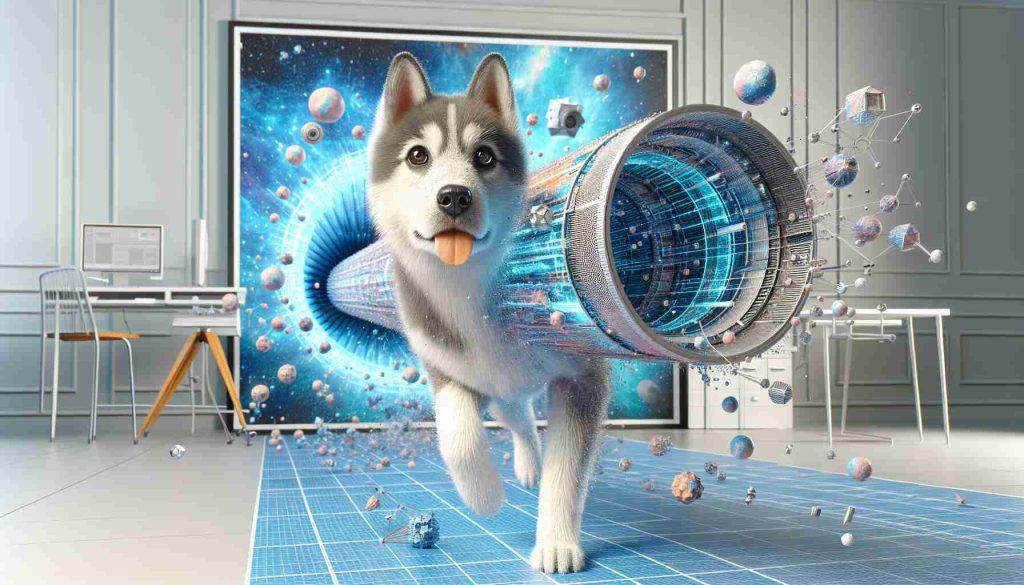New Horizons in Digital Modeling through DigiDogs Innovation

Advancing the boundaries of 3D modeling technology, researchers from the University of Surrey, in collaboration with the renowned video game Grand Theft Auto, have achieved a breakthrough in digital modeling. This pioneering study led to the development of an advanced artificial intelligence system capable of transforming two-dimensional images of dogs into precise three-dimensional models. Recognized with the Best Paper award at the IEEE/CVF Winter Conference on Applications of Computer Vision, this technological feat has opened new possibilities in conservation, animal welfare, and digital art.
By transforming images of dogs from Grand Theft Auto into realistic 3D models, scientists utilized the DigiDogs database. Comprising 27,900 frames across various actions and scenarios meticulously collected using modified scenes from Grand Theft Auto V, this virtual environment provided a unique and diverse dataset, enabling researchers to train the AI system at an unprecedented level of detail and variability. Leveraging the advanced DINOv2 model developed by Meta further refined the artificial intelligence’s capabilities in predicting 3D positions from two-dimensional photographs with impressive accuracy.
The implications of these research efforts extend far beyond the realms of video games and science. In the conservation field, this artificial intelligence technique holds the potential to revolutionize the identification and monitoring of injured or endangered animals in their natural habitats, offering a non-invasive method for effective wildlife population tracking. Moreover, in art, the ability to generate realistic 3D animal models from simple photographs opens new possibilities for artists and designers, enhancing the quality and creative potential in digital art and media.
While the current success marks a significant milestone, the research team is well aware of the challenges that lie ahead in further developing this technology. Subsequent iterations aim to encompass a broader range of animals and scenarios, further enhancing the model’s accuracy and applications. Balancing the computational requirements of such detailed modeling with the need for accessibility and efficiency poses a challenge. However, the potential benefits for both scientific research and the creative industry make this a fascinating field for further advancement.
Stepping into a new era of digital modeling, the collaboration between the University of Surrey and Grand Theft Auto exemplifies the innovative potential of interdisciplinary research. This breakthrough in 3D modeling, driven by artificial intelligence, not only showcases the practical applications of video game technology beyond entertainment but also underscores the evolving relationship between art, science, and technology.
### Section FAQ:
1. What pioneering discovery did researchers from the University of Surrey make?
– Researchers from the University of Surrey achieved a breakthrough in digital modeling technology by creating an advanced artificial intelligence system capable of transforming two-dimensional images of dogs into precise three-dimensional models.
2. Which data were used to train the AI system?
– Scientists utilized the DigiDogs database containing 27,900 frames across various actions and scenarios collected using modified scenes from the video game Grand Theft Auto V.
3. What possibilities does this discovery open up in the field of conservation?
– The artificial intelligence technique has the potential to revolutionize the identification and monitoring of injured or endangered animals in their natural habitats, offering a non-invasive method for effective wildlife population tracking.
4. What possibilities does this discovery open up in the field of art?
– The ability to generate realistic 3D animal models from simple photographs opens new possibilities for artists and designers, enhancing the quality and creative potential in digital art and media.
5. What are the challenges associated with further developing this technology?
– The challenge lies in incorporating a wider range of animals and scenarios to further increase the model’s accuracy and applications while maintaining a balance between computational requirements and accessibility and efficiency.
### Key Term Definitions:
– Digital Modeling: The process of creating three-dimensional computer models based on two-dimensional data such as photographic images.
– Artificial Intelligence (AI): A branch of computer science dedicated to creating computer systems capable of performing tasks that typically require human intelligence, such as image recognition, natural language processing, etc.
– DigiDogs: A database containing a collection of frames across various actions and scenarios, gathered using modified scenes from the video game Grand Theft Auto V.
– Grand Theft Auto: A popular video game series focusing on various forms of crime in an open world setting, created by Rockstar Games.
### Related Links:
– [University of Surrey](https://www.surrey.ac.uk)
– [Grand Theft Auto Official Website](https://www.rockstargames.com)
– [IEEE Xplore Digital Library](https://ieeexplore.ieee.org)
The source of the article is from the blog mendozaextremo.com.ar